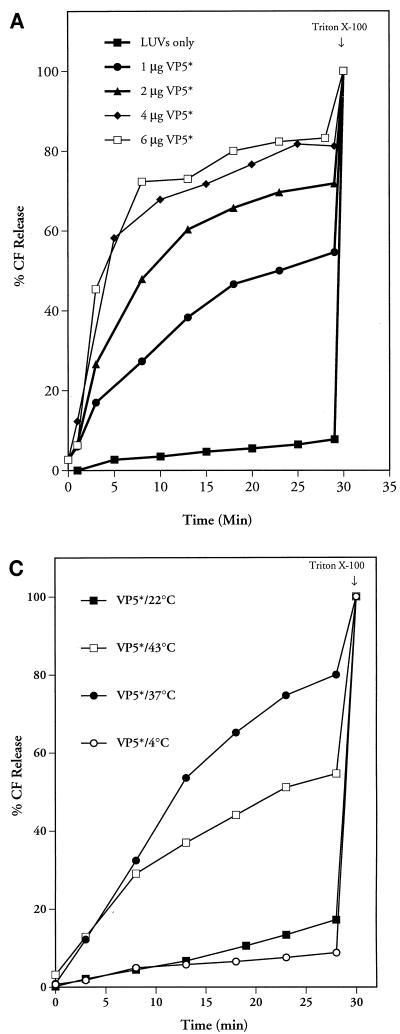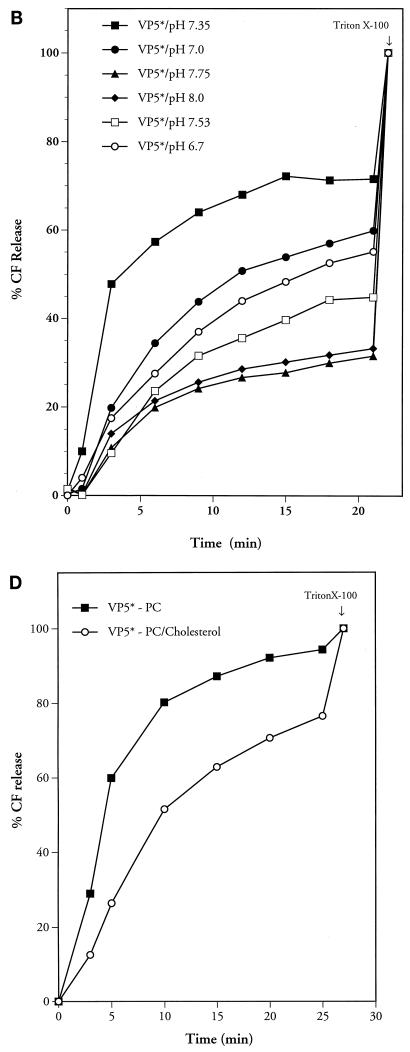FIG. 4.
Conditions of VP5*-induced membrane permeability. VP5* was added to CF-loaded LUVs under various conditions. (A) Increasing amounts of purified VP5* (1 μg [11 nM], 2 μg [22 nM], 4 μg [44 nM], or 6 μg [66 nM]) were added to LUVs. This experiment was repeated two times with similar results. (B) VP5* (4 μg; 44 nM) was incubated with LUVs in TN buffer at various pHs, and results were corrected for spontaneous CF release at identical pHs. This experiment was repeated six times with similar results. (C) VP5* (4 μg; 44 nM) and LUVs were incubated as described above at 4, 22, 37, or 43°C. This experiment was repeated five times with similar results. (D) Egg yolk PC or PC-cholesterol (10:1) LUVs were preloaded with CF and purified by Sephadex G-50 chromatography. This experiment was repeated three times with similar results. The ability of the VP5* (4 μg; 44 nM) to permeabilize PC liposomes with or without the inclusion of cholesterol was monitored over time. Fluorescence dequenching of samples was monitored in a fluorimeter at an excitation wavelength of 490 nm and an emission wavelength of 520 nm. After 22 min (B), 27 min (D), or 30 min (A and C), the total CF content of each sample was assessed by addition of Triton X-100 (0.125%) and quantitated as described in Materials and Methods.


